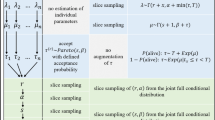Abstract
Consider the case of a buyer-seller relationship in which neither the length nor the usage or monetary volume is contractually fixed, i.e. aviation services, hotels, retail outlets. In this non -contractual setting (Reinartz/Kumar 2000), it is especially challenging to forecast if a customer will repurchase at a company and if so how many transactions a customer will conduct with the supplier in the future. A customer may have moved to another city, may have been disenchanted with the purchased product and may have switched the provider or may for any other reason not need the supplier’s service anymore. The complexity of the problem stems from the fact that a company is generally not notified when a customer stops purchasing from it. Knowing whether and if so, how intensively a customer continues to purchase from the supplier is fundamental information for successful and reliable computation of e.g. CLV and customer equity. It may as well act as information for reactivation of lost customers and more importantly for preventing imminent customer dropouts .
Access this chapter
Tax calculation will be finalised at checkout
Purchases are for personal use only
Preview
Unable to display preview. Download preview PDF.
Similar content being viewed by others
References
Abramowitz, M./ Stegun, I. A. (1972): Handbook of Mathematical Functions. Dover Publications Inc., New York.
Balasubramanian, S./ Gupta, S./ Kamakura, W./ Wedel, M. (1998): Modeling large data sets in marketing, in: Statistica Neerlandica, Vol. 52, Issue 3, p. 303–324.
Ehrenberg, A. S. C. (1988): Repeat-Buying, Theory and Applications (2nd ed.). London, Griffin.
Fader, P. S./ Hardie B. G. S./ Lee K. L. (2005a): ‘Counting Your Customers’ the Easy Way: An Alternative to the Pareto/NBD Model, in: Marketing Science, Vol. 24, Issue 2, p. 275–285.
Fader, P. S./Hardie B. G. S./Lee K. L. (2005b): A Note on Implementing the Pareto/NBD model in MATLAB, http://www.brucehardie.com/notes/008/
Jain, D/ Singh, S. S. (2002): Customer Lifetime Value Research In Marketing: A Review And Future Directions, in: Journal of Interactive Marketing, Vol. 16 Issue 2, p. 34–47.
Kamakura, W./ Mela, C. F. (2004): Choice Models and Customer Relationship Management, in: Marketing Letters. Conditionally accepted.
Krafft, M. (2002): Kundenbindung und Kundenwert, Heidelberg.
Lozier, D. W./ Olver, F. W. J. (1995): Numerical evaluation of special functions. Walter Gautschi (ed.), Mathematics of Computation 1943-1993: A Half-Century of Computation Mathematics. Proceedings of Symposia in Applied Mathematics. Proceedings of Symposia in Applied Mathematics, Providence, RI.
Reinartz, W. J./ Kumar, V. (2000): On the Profitability of Long-Life Customers in a Non-contractual Setting: An Empirical Investigation and Implications for Marketing, in: Journal of Marketing, Vol. 64(October) 2000, p. 17–35.
Reinartz, W. J./ Kumar, V. (2003): The Impact of Customer Relationship Characteristics on Profitable Lifetime Duration, in: Journal of Marketing, Vol. 67(January), p. 77–100.
Rust, R./ Chung, T. S. (2005): Marketing Models of Service and Relationships, in: Marketing Science. Forthcoming.
Schmittlein, D. C./ Morrison, D. G. (1981): The Median Residual Lifetime: A Characterization Theorem and an Application, in: Operations Research, Vol. 29, p. 392–399.
Schmittlein, D. C./ Morrison, D. G./ Colombo, R. (1987): Counting Your Customers: Who Are They and What Will They Do Next?, in: Management Science, Vol. 33, No. 1, p. 1–24.
Schmittlein, D. C/ Peterson, R. A. (1994): Customer Base Analysis: An Industrial Purchase Process Analysis, in: Marketing Science, Vol. 13, (Winter), p. 41–67.
Author information
Authors and Affiliations
Editor information
Rights and permissions
Copyright information
© 2006 Deutsher Universitäts-Verlag | GWV Fachverlage GmbH, Wiesbaden
About this chapter
Cite this chapter
Wübben, M., Wangenheim, F.V. (2006). Parameter Estimation in the Pareto/NBD Model. In: Kleinaltenkamp, M. (eds) Innovatives Dienstleistungsmarketing in Theorie und Praxis. DUV. https://doi.org/10.1007/978-3-8350-9489-5_4
Download citation
DOI: https://doi.org/10.1007/978-3-8350-9489-5_4
Publisher Name: DUV
Print ISBN: 978-3-8350-0647-8
Online ISBN: 978-3-8350-9489-5
eBook Packages: Business and Economics (German Language)




